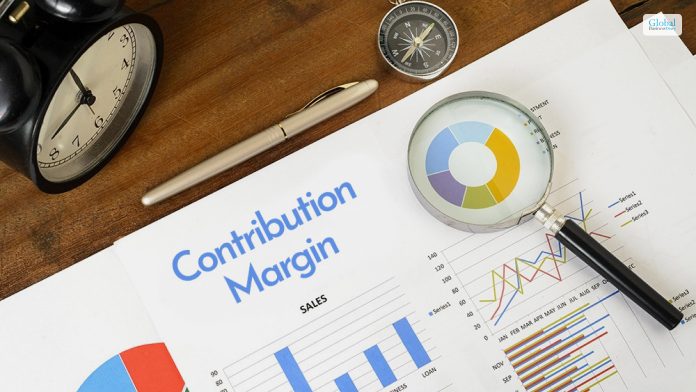How Financial Advisers and Fund Managers Make Good Use of Cutting-Edge Analysis Software

Finance professionals work in high-pressure environments and the level of responsibility is off the charts; fund managers are responsible for investing millions of dollars, therefore they make the best use of available software to help them in many ways.
How Does Software Help Fund Managers & Financial Advisors?

There are several ways software can help fund managers and financial advisors. You need to know the reasons well to have a better idea of it. Some of the key factors that you should take care of here are as follows:-
1. Secure Online Platform
Register with one of Australia’s leading wealth management platform and you can take advantage of the many powerful features, such as:
- Interactive Client Presentations – Impress your clients with interactive presentations that are designed to engage the client and help them gain a deeper understanding of their portfolio.
- Broad Range Of Investment Options – Using a top-rated platform, you can offer your clients a broad range of investment options; search the web for the best wealth management platform and see what they have to offer. Managed portfolios, managed funds listed securities, term deposits and annuities.
- SMSF – Your clients can experience the benefits of an SMSF without actually owning one, with low-cost investors who can eventually increase their portfolio and keep admin costs down.
- Managing CGT – Capital Gains Tax is not something you can afford to ignore and the top platform offers the potential to minimise CGT with tax optimisation capabilities.
- All Device Compatibility – As you would expect, the platform is all device compatible, and millions of people use their mobile device when surfing the web. Click here for a list of the best mobile apps for investors.
2. Delivering Value To Your Clients
Your clients all have one thing in common, they are looking for the best value from their portfolio and by having access to cutting-edge software and powerful features on a secure platform, your clients will have the very best tools available. Enhanced portfolio management capability is how you provide your clients with the tools they need to be successful and there are Australian wealth generation platforms with bank-grade cyber-security.
3. Online Learning Resources
Forging a working relationship with a leading Australian wealth generation platform allows you and your clients access to a huge library of learning resources; we are all on a lifetime journey of learning and having access to the best resources is essential.
Technology is always developing and today’s generation of specific business software is about as good as it gets; financial advisers and fund managers should make use of the best platforms and tools to bring their clients the best possible investment opportunities.
4. Online Solutions
As a financial adviser or fund manager, everything you need can be found with a single digital platform and Google can help you to find Australia’s leading provider of an investor platform. Take a look at the services and features on offer and once you are registered, you and your clients can take advantage of the many aspects on offer from Australia’s leading wealth generation platform.
You owe your clients the best possible opportunities and by making good use of cutting-edge digital platforms, you are empowering your clients and helping them to generate wealth.
How Can Wealth Management Platforms Shape Your Business Future?

There are several reasons why wealth management platforms can help you shape your business’s future in the correct order. Some of the key factors that you must know from your end are as follows:-
1. Technology Integration
As financial technology evolves, wealth management platforms play a crucial role in integrating these technological advancements into wealth management practices. This includes features like artificial intelligence-driven portfolio management, algorithmic trading, and automated financial planning tools.
2. Customization & Personalization
Wealth management platforms allow for tailored financial strategies based on individual needs and goals. With advancements in data analytics and machine learning, these platforms can offer increasingly personalized recommendations, asset allocation strategies, and risk management solutions.
3. Accessibility & Convenience
In an increasingly digital world, wealth management platforms provide accessibility and convenience to clients. Investors can monitor and manage their portfolios from anywhere, anytime, using mobile apps or online portals. This accessibility fosters greater engagement and transparency between clients and their financial advisors.
4. Cost Efficiency
Wealth management platforms often offer cost-effective solutions compared to traditional financial advisory services. Through automation and scalability, these platforms can lower down the payments, and the minimum amount of expenses is essential, making wealth management services more accessible to a broader range of investors.
5. Regulatory Compliance & Security
With growing concerns around data privacy and regulatory compliance, wealth management platforms invest heavily in robust security measures and compliance frameworks. These platforms ensure that client data is protected and that all transactions adhere to regulatory standards, providing peace of mind to investors.
6. Global Reach & Diversification
Wealth management platforms enable investors to diversify their portfolios seamlessly across various asset classes and geographic regions. This global reach allows investors to capitalize on opportunities in international markets while mitigating risks through diversification. Without proper application of the plans, things can turn worse for you in all possible ways. Ensure that you follow the right process from your end points. Methods must reduce the chances of financial errors the restrict the chances of the global reach and diversification.
7. Educational Resources
Many wealth management platforms offer educational resources and tools to help investors make informed decisions about their finances. This includes access to market research, financial planning calculators, and educational content. Such as investment strategies, retirement planning, and tax optimization. This is essential for your brand development. Proper application of the perfect strategy will help you in attaining your financial management.
Final Take Away
Wealth management platforms play a vital role in facilitating efficient, personalized, and accessible wealth management services in 2024. It is driven by technological innovation, cost efficiency, regulatory compliance, and a focus on enhancing the client experience. You need to identify the perfect solution that can assist you in attaining your objectives with complete clarity. Try to get things done at the correct time within a specific period of time. Once you follow the correct methods, things can become easier for you.
Read More:













